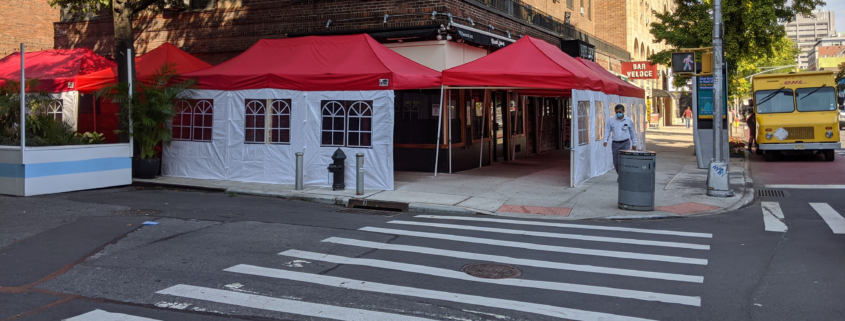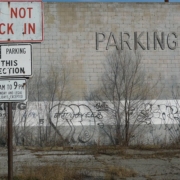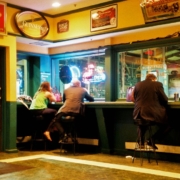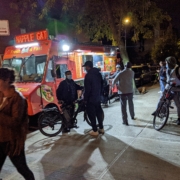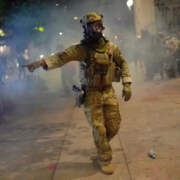Gimme Shelter? Examining the temporary structures that restaurants have built for outdoor dining during COVID-19
COVID-19 has had numerous effects at home and abroad.
Lives and institutions have been seriously disrupted.
Many people have been infected, and over a half million people in the United States alone have died.
Most public schools are closed, many businesses have shuttered, and lots of people and organizations have had to innovate.
One of those small areas where change has taken place has been in the restaurant industry.
Sure many of them have pivoted and switched to take out and curbside delivery. Some have done this successfully, while others not so well.
Many restaurants and other dining establishments, some with the blessing of the municipality or county in which they are located, (e.g., including small grants and loans), have experimented by creating or expanding outdoor eating areas. In some cases all that was done was placing a few chairs and small tables on the narrow pedestrian sidewalks in front of or to the side of their establishments. Other restaurants have set up tables in back alleys and nearby parking lots, while some have pitched tents, assembled bubbles, or constructed makeshift structures, some resembling temporary shelters built out of plywood, corrugated plastic, and placed in spaces that were at one time used as street parking spaces.
These latter areas are often protected from vehicular traffic by orange cones, metal grates, or cement or plastic barriers typically used in road and highway construction. Some have encroached to spaces in front of neighboring retail businesses.
On the plus side, this means that the restaurant can stay in business, keep many of their workers employed, and the construction of these temporary structures has enabled a small army of local handymen to stay in business or supplement their income building, assembling, or erecting the structures. It has also led to a small boom in the industry that sells the necessary building materials or rents out items like canopies, grates, barriers, etc.
The kinds of materials, designs, and durability of these makeshift structures vary considerably. We can celebrate the ingenuity of the owners and the creativity imbued in these structures.
But we also need to keep in mind that this development in contemporary urban public space comes at a price, not only in terms of what it has cost the restaurant, but in externalities they have created. Let’s temporarily suspend the negative externalities that both cars and roads create for the taxpayer. But the usage of this space means that we have less parking available for cars and thus more competition for parking spaces and a loss of revenue for the municipality or county. All things being equal, the competition for parking spaces will put greater pressures on neighboring streets where there may be residences that may already feel the pinch of low availability of parking.
Meanwhile many of the restaurants, particularly those operating in the northern states, during the cold fall and winter months, have tried to enhance the comfort of their customers by using propane heaters. Besides the added expense, they are contributing to our carbon footprint, by eat up gas, and putting these fumes into the local atmosphere of our urban environments.
What is going to happen when COVID-19 no longer presents the same level of risk that it once did? Will the restaurants and the local government where they are located embrace the temporary structures as the way of the future? Or will the temporary structures come down? Will they be stored, ready to be reassembled if another pandemic occurs? Perhaps? If the eating establishment has space in their structure, or maybe despite the slim margins they make on food they buy and prepare, they can afford to keep it somewhere else (e.g., the owners’ residence or a storage facility). Will the materials be recycled, or are they simply going to haul off the wood, plastic and metal to the town dump after the fact?
In the end, has the experiment to erect these makeshift structures worth the price both the restaurants and the communities they serve worth it. They may have staved off a loss of tax revenue for the municipality, prevented the unemployment of their workers, and maybe have contributed to the street and urban culture of particular neighborhoods. On the other hand, I’m not sure that our municipal and county councils have thought this through, and made the cost benefit calculations that would be relevant with the erection of these structures.
Maybe many restaurants, with assistance of municipal and county governments, will keep the structures. This may eventually lead the way to less cars in our urban centers. Fewer cars on the streets, may mean an opportunity for more bikes, and alternative mobility solutions, and pedestrian traffic, like we have seen in recent years in a handful of larger cities like New York City and San Francisco.
Photo by Eden, Janine and Jim
Missing the Point

